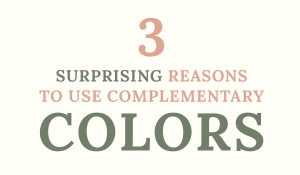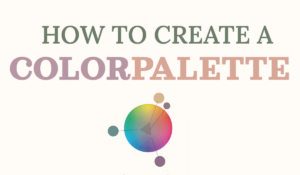If you google the 3 primary colors you see that you get contradictory results. In elementary school, you learn about red blue, and yellow. In high school, you learn that Isaac Newton discovered that red, green, and blue make up all other colors. But when you follow a graphic design course they talk about using cyan magenta, and yellow. So which one is it?! Get ready to read all about ”Difference BYR, CMY and RGB explained”
Which color wheel is best? Difference BYR, CMY and RGB explained
It all depends on whether you are talking about light or pigments.
Which primary colors are used for light?
When it comes to light, the primary colors are red, green, and blue. If combined, these colored lights create white light. When we mix 2 primaries, they result in these secondary colors: cyan, magenta, and yellow.

If we look at the picture above we see that light plus light equals a brighter light. This is why it’s called additive color theory.
Anything that emits light, tv, smartphones, screens, use RGB colors as their primaries.
Which primary colors are used for pigments?
Pigments are used on objects that don’t emit light. Think of paint on canvas, inks, fabric, and other non-light-emitting objects.
Blue, Yellow and Red (BYR)
In elementary school, we get taught that the primaries are blue, red, and yellow. While it is true that these primaries create any other hue, the results are not optimal. Check out the color wheel for BYR:

We see that the secondary and tertiary colors are dull and not very vibrant. Pigment plus pigment equals darker pigment. Hence the name: subtractive color theory.
Cyan, Magenta, and blue (CMY)
This is where the CMY primaries come in. As we’ve just learned, Cyan, magenta, and yellow are the results of mixing 2 of the primary lights: Red, green, and blue. So what happens if we use cyan, magenta, and yellow as primary pigments?

The secondary and tertiary colors of CMY are brighter than the secondary and tertiary colors of BYR! But how?
It all comes down to how we see
We see things because of light. When light hits an object, it reflects certain colors back to us, which makes us see that object. When we swatch red paint onto a white canvas, all colors are reflected back ( = white) except where the red paint is. There, it absorbs cyan which makes us see red.

As you can see in the image above: if we put RGB on top of CMY we see which colors have to be absorbed in order for us to see that color.
We start off with white: all colors are reflected. But when 1 color gets absorbed we see the opposite color.
So, we see because of light (additive color theory), but we mix our paints (pigments) according to subtractive color theory.
Should I ditch BYR and switch to CMY?
It’s better to mix paint with brighter colors (CMY) because we can always dull it down. We cannot make it more vivid!
Having said that, you should not ditch your BYR. There are plenty of occasions where you need to paint with dull colors. Think of nature scenes for example. Mixing colors that are vivid require an extra step to get dulled down.
Also, blue and red are warm colors. Cyan and magenta are cool colors. There are times when you need to paint with either cool or warm colors in order to avoid muddiness.
Use a split primary color palette
A split primary color palette is exactly like the name suggests: Each primary has a cool and warm version. It’s half BYR and half CYM. The benefit of a split primary palette is that you get the best of both worlds.

A full BYR color palette produces dull and dark colors except for the oranges. A full CMY palette produces bright and vivid colors except for the oranges. If we take the oranges from a BYR palette and the greens from a CYM palette it will look a lot better. The purple will be mixed from magenta and blue. Purple looks the most vivid this way. I’ll go more into depth with this in a separate article.
When to use RGB
We don’t use the RGB primaries to paint or create art with. We do use them in photo-editing software like Photoshop. This is why it comes in handy to know how additive color theory works. Especially if you want to color grade your images.
FAQs about RGB, CMYK and BYR
Which color wheel is best?
CMY are the best choices when it comes to mixing pigments because you get the brightest secondary and tertiary hues with them. However, if you have the option available you should work with a split primary color wheel to get the best of both (BYR and CMY) worlds. RGB is only used in photo-editing software or when you use certain blending modes (Add and Exclusion).
So how come we still get taught BYR are the primaries?
I think elementary schools call the primaries blue yellow and red, even when they are actually talking about cyan, magenta, and yellow. And thus adults (or at least non-artists) identify anything remotely close to BYR as BYR and teach their children the wrong names, which then continues the cycle. It’s just a force of habit. Nothing more, nothing less!
How come we don't use RGB when painting digitally?
We directly pick a color from a color wheel in a paint software like Photoshop or Procreate. There’s no need for mixing colors. But if we do mix, like a green and red we get a greyish color and not yellow. Why? It’s because paint programs are made to simulate traditional painting or drawing environments. It uses subtractive color theory when working with paint colors.
We can simulate what happens if we ‘’paint’’ with lights (additive color theory) by switching our blend mode to add. There’s a similar blend mode called exclusion which, you guessed it, does the opposite.
When we alter an image, for example with curves, we do use RGB. So knowing how RGB works is a must if you work in photo editing software!
What does the K in CMYK stand for?
CMYK is used for printing. The K stands for black. We now know that CMY are primaries that make every hue. But, it does not make every color. Read this article that explains everything you need to know about colors. In short: color also includes saturation and value. Hue does not have that information. It is only the name of the color. By adding K or black you can create shades (dark values). Tints (light values) are created by using the white of the paper so there is no need to add an extra white color when it comes to printing.
I hope all of this made sense to you! You are now one step closer to fully understanding color theory :)
See you next week,
♡ Laura




